Tired of the monotonous grind of traditional weightlifting? Yearning for a workout that challenges your body and mind in new ways?
Sandbag training is the answer.
Imagine hoisting a shifting, unpredictable weight, forcing your muscles to work harder and your core to engage like never before.
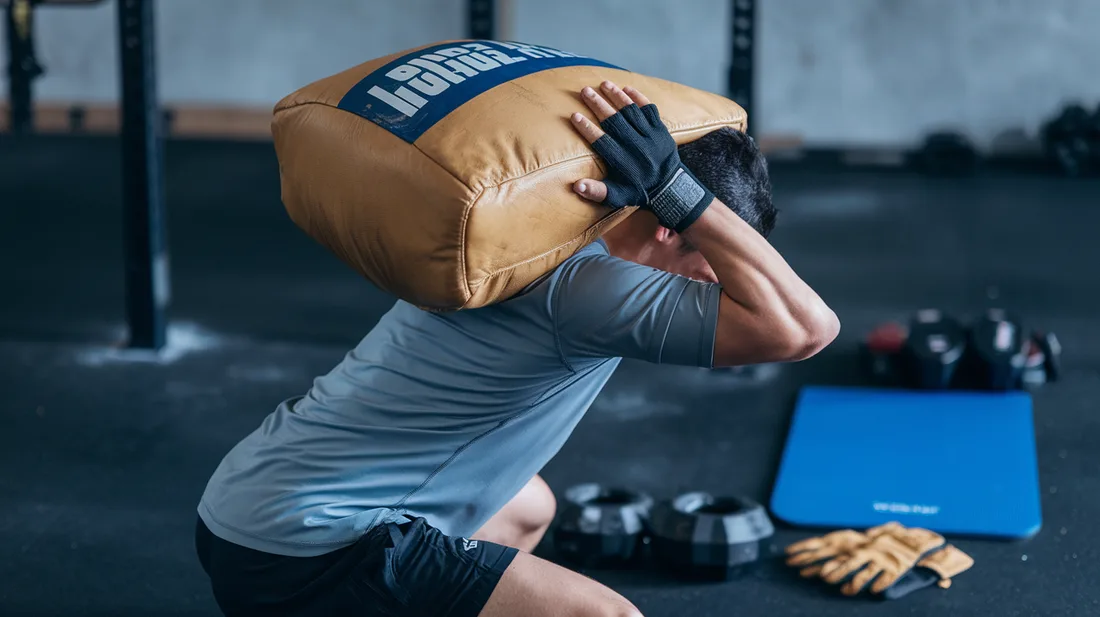
This is the unique power of sandbag training.
It’s not just about lifting weights; it’s about mastering your body’s ability to adapt and overcome challenges.
Unlike traditional weightlifting, sandbags offer a dynamic and versatile workout that translates directly to real-world strength and athletic performance.
Whether you’re an athlete striving for peak performance or simply looking to improve your overall fitness, sandbag training can help you achieve your goals.
In this comprehensive guide, we’ll delve into the fundamentals of sandbag training, explore its numerous benefits, and provide practical tips to get you started.
From essential exercises and workout routines to safety considerations, we’ve got you covered.
So, let’s embark on this exciting fitness journey together.
What is Sandbag Training?
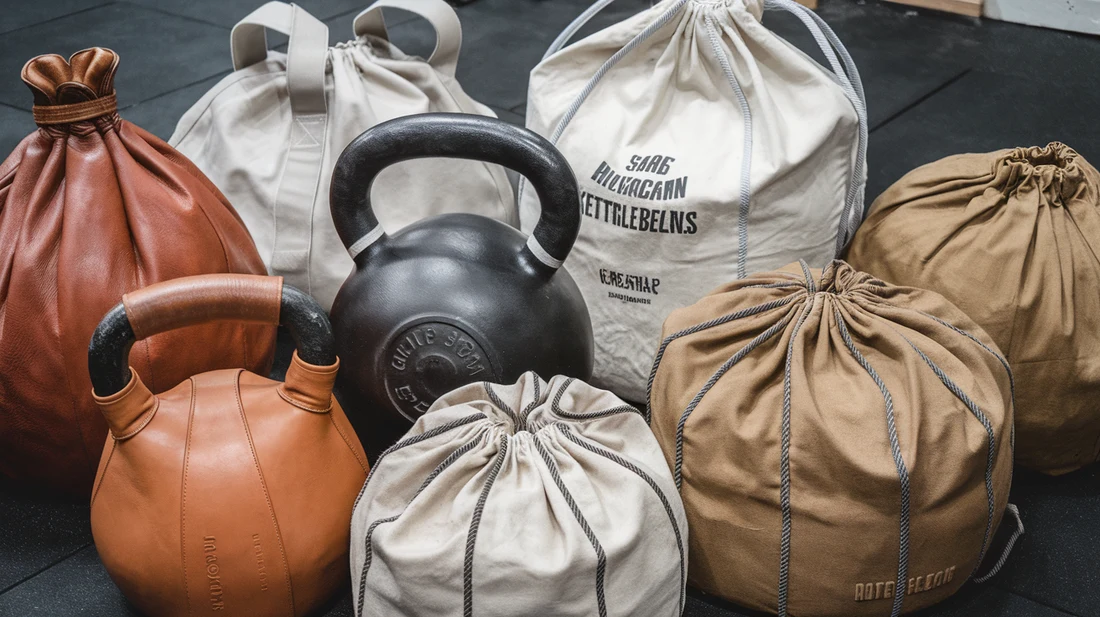
Definition and History
Sandbag training is a form of strength and conditioning that utilizes bags filled with various materials, such as sand, rice, or rubber pellets.
Unlike traditional weightlifting, sandbags are constantly shifting and changing shape, demanding greater stabilization and control from the lifter.
This unique characteristic makes sandbag training an effective way to develop functional strength and improve athletic performance.
The exact origins of sandbag training are unclear, but it has been used by various cultures throughout history for both practical and combat purposes.
In recent years, sandbag training has gained popularity in the fitness world due to its versatility and effectiveness.
Key Benefits of Sandbag Training
- Enhanced Functional Strength: Sandbag training mimics real-world movements, such as lifting, carrying, and throwing, leading to improved functional strength and power.
- Increased Core Engagement: The constant shifting of the weight forces you to engage your core muscles to maintain stability and balance.
- Versatility: Sandbags can be used for a wide range of exercises, from strength training to cardio conditioning.
- Affordability: Sandbags are relatively inexpensive and can be filled with various materials, making them a budget-friendly option for home workouts.
- Accessibility: Sandbag training can be performed anywhere, from a home gym to a park.
Comparison with Traditional Weight Training
| Feature | Sandbag Training | Traditional Weightlifting |
|---|---|---|
| Muscle Activation | Targets multiple muscle groups simultaneously | Isolates specific muscle groups |
| Core Engagement | Requires constant core stabilization | Less emphasis on core strength |
| Movement Patterns | Mimics real-world movements | Focuses on linear movements |
| Adaptability | Can be adjusted by changing the weight and handle position | Requires different weights for different exercises |
As you can see, sandbag training offers a more holistic approach to strength training, emphasizing functional fitness and real-world applications.
Benefits of Sandbag Training
| Feature | Sandbag Training | Traditional Weightlifting |
|---|---|---|
| Core Strength | High | Low to Moderate |
| Functional Movement | Excellent | Limited |
| Versatility | High | Moderate |
| Adaptability | High | Moderate |
| Cost-Effectiveness | High | Moderate |
Enhanced Functional Strength and Versatility
One of the primary advantages of sandbag training is its ability to develop functional strength.
Unlike traditional weightlifting, which often focuses on isolating specific muscle groups, sandbag training engages multiple muscle groups simultaneously.
This translates to improved performance in real-world activities, such as lifting heavy objects, playing sports, and performing everyday tasks.
Real-World Applications
The unique nature of sandbag training makes it an excellent tool for enhancing real-world strength and athletic performance:
- Daily Life: Sandbag training can help you with everyday tasks like carrying groceries, lifting luggage, and moving furniture.
- Sports Performance: Athletes in various sports, such as football, basketball, and CrossFit, can benefit from the increased power, explosiveness, and endurance that sandbag training provides.
- Injury Prevention: By strengthening your core and improving your balance, sandbag training can help reduce your risk of injuries.
The constant instability of sandbags forces your core muscles to work harder to stabilize your body.
This increased core engagement leads to improved posture, balance, and overall body control.
Essential Sandbag Exercises
Top 10 Sandbag Exercises for Real-World Strength
Sandbag Clean and Press:

Brute Force Training
A full-body exercise that combines a powerful hip drive with shoulder strength.
Sandbag Squat:
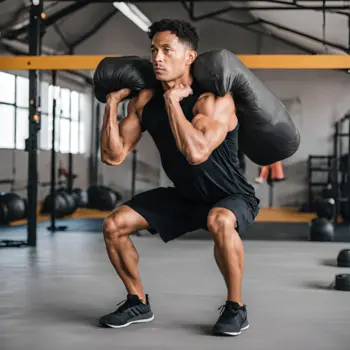
A foundational exercise that targets the lower body, core, and upper back.
Sandbag Lunge

A unilateral exercise that challenges balance, stability, and leg strength.
Sandbag Rows

Brute Force Training
A great exercise for developing back and biceps strength.
Sandbag Deadlift
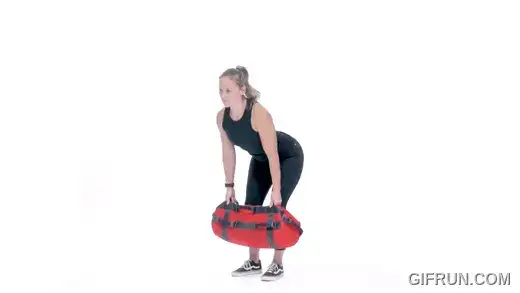
Brute Force Training
A powerful exercise that targets the lower back, hamstrings, and quadriceps.
Sandbag Farmer’s Carry
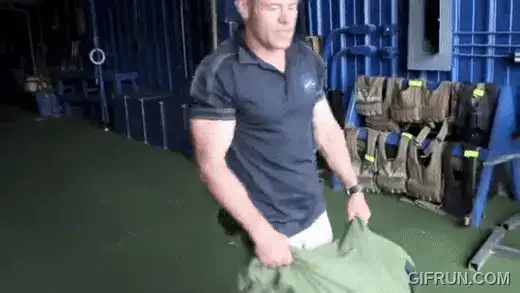
Military Athlete
A simple yet effective exercise for building grip strength and overall body conditioning.
Sandbag Turkish Get-Up
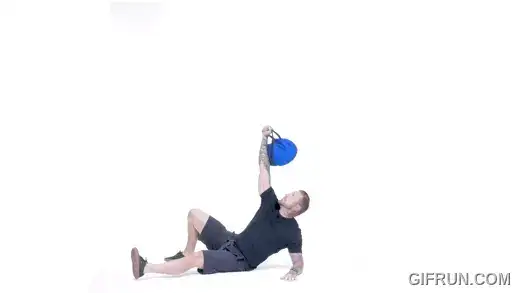
A complex movement that challenges coordination, balance, and mobility.
Sandbag Overhead Press
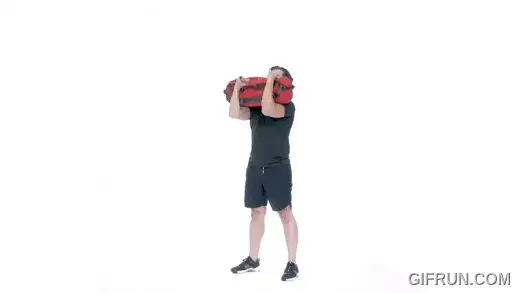
An excellent exercise for building shoulder strength and stability.
Sandbag Bear Hug Squat
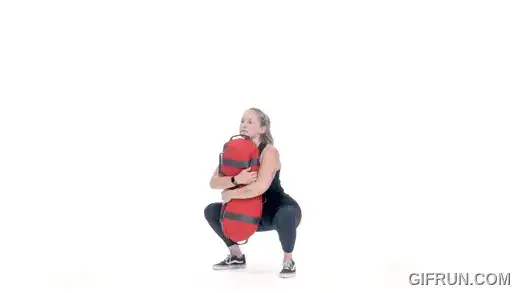
A unique variation of the squat that engages the core and upper body.
Sandbag Windmill
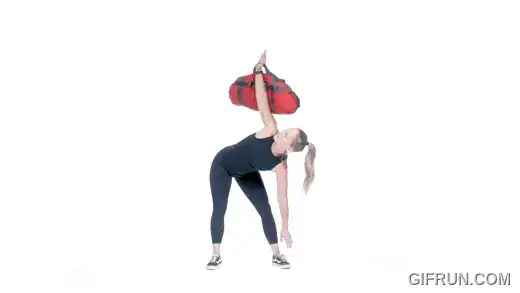
A challenging exercise that improves flexibility, core strength, and coordination.
How Each Exercise Contributes to Overall Strength
Each of these exercises targets specific muscle groups and movement patterns, contributing to a well-rounded physique and enhanced functional strength.
For example:
- Compound Exercises: Exercises like the clean and press and the squat engage multiple muscle groups, leading to increased overall strength and muscle mass.
- Core Strength: Exercises like the Turkish get-up and bear hug squat challenge your core muscles, improving stability and balance.
- Functional Strength: Movements like the farmer’s carry and lunges mimic real-world activities, making you stronger and more efficient in everyday life.
- Explosive Power: Exercises like the sandbag clean and press develop explosive power, which can benefit athletes in various sports.
By incorporating these exercises into your training routine, you can achieve a higher level of fitness and improve your overall quality of life.
Sandbag Training Programs
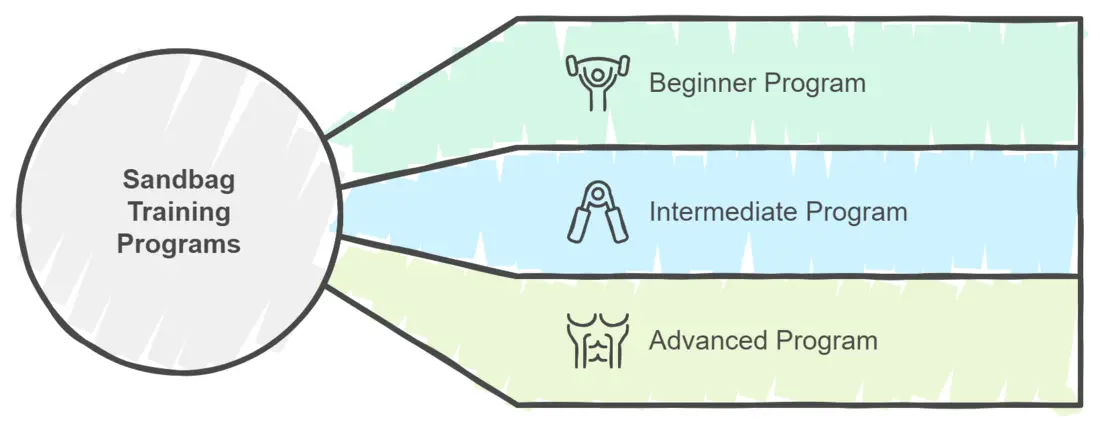
Beginner Program (2-3 workouts per week)
- Monday: Full-Body Workout
- Sandbag Squats: 3 sets of 10-12 reps
- Sandbag Rows: 3 sets of 12-15 reps per arm
- Sandbag Lunges: 3 sets of 10-12 reps per leg
- Sandbag Overhead Press: 3 sets of 8-10 reps
- Sandbag Plank: 3 sets of 30-60 seconds
- Thursday: Full-Body Workout
- Sandbag Deadlifts: 3 sets of 8-10 reps
- Sandbag Turkish Get-Ups: 3 sets of 5 reps per side
- Sandbag Farmer’s Carry: 3 sets of 30-60 seconds per side
- Sandbag Windmill: 3 sets of 5 reps per side
- Sandbag Russian Twists: 3 sets of 20-30 reps
Intermediate Program (3-4 workouts per week)
- Monday: Strength and Power
- Sandbag Clean and Press: 3 sets of 5-8 reps
- Sandbag Back Squats: 3 sets of 8-10 reps
- Sandbag Bench Press: 3 sets of 8-10 reps
- Sandbag Pull-ups: 3 sets of as many reps as possible
- Wednesday: Metabolic Conditioning
- Sandbag AMRAP (As Many Reps As Possible) Circuit:
- Sandbag Swings: 30 reps
- Sandbag Thrusters: 20 reps
- Sandbag Kettlebell Swings: 20 reps
- Sandbag Burpees: 15 reps
- Complete 3-4 rounds with minimal rest between exercises.
- Sandbag AMRAP (As Many Reps As Possible) Circuit:
- Friday: Accessory Work
- Sandbag Lunges: 3 sets of 12-15 reps per leg
- Sandbag Bulgarian Split Squats: 3 sets of 10-12 reps per leg
- Sandbag Face Pulls: 3 sets of 15-20 reps
- Sandbag Triceps Extensions: 3 sets of 12-15 reps
Advanced Program (4-5 workouts per week)
- Monday: Strength and Power
- Sandbag Power Cleans: 3 sets of 3-5 reps
- Sandbag Front Squats: 3 sets of 5-8 reps
- Sandbag Bench Press: 3 sets of 5-8 reps
- Sandbag Pull-ups: 3 sets of as many reps as possible
- Wednesday: Metabolic Conditioning
- Sandbag EMOM (Every Minute On the Minute) Workout:
- Minute 1: Sandbag Swings (as many reps as possible)
- Minute 2: Sandbag Thrusters (as many reps as possible)
- Minute 3: Rest
- Repeat for 10-15 rounds.
- Sandbag EMOM (Every Minute On the Minute) Workout:
- Friday: Accessory Work
- Sandbag Single-Leg Romanian Deadlifts: 3 sets of 10-12 reps per side
- Sandbag Overhead Press: 3 sets of 8-10 reps
- Sandbag Bicep Curls: 3 sets of 12-15 reps
- Sandbag Triceps Extensions: 3 sets of 12-15 reps
Structured Approach to Progress
Following a structured training plan is essential for consistent progress and injury prevention.
As you get stronger, you can gradually increase the weight, reps, or sets to continue challenging your body.
For beginners, using rice instead of sand can be a lighter and more manageable option.
Remember to listen to your body and adjust your workouts as needed.
If you experience pain or discomfort, take a break and consult with a healthcare professional.
Tips for Effective Sandbag Training
Proper Form and Technique
Maintaining proper form is crucial for maximizing the benefits of sandbag training and minimizing the risk of injury.
Here are some key tips to keep in mind:
- Engage Your Core: Your core muscles play a vital role in stabilizing your body during sandbag exercises. Engage your core throughout the movement to protect your spine and improve overall performance.
- Maintain a Neutral Spine: Avoid rounding your back, especially during exercises like squats and deadlifts. Maintain a neutral spine to protect your lower back.
- Control the Movement: Avoid swinging the weight or using momentum to complete the lift. Focus on controlled, deliberate movements.
- Listen to Your Body: If you feel pain, stop the exercise and rest. Don’t push through pain, as this can lead to injury.
Common Mistakes to Avoid
- Rounding Your Back: Rounding your back during exercises like squats and deadlifts can put excessive stress on your spine.
- Swinging the Weight: Swinging the weight can reduce the effectiveness of the exercise and increase your risk of injury.
- Not Engaging Your Core: A weak core can lead to poor form and increased risk of injury.
- Using Excessive Weight: Start with a manageable weight and gradually increase it as you get stronger.
By following these tips and prioritizing proper form, you can ensure a safe and effective sandbag training experience.
Key Takeaway – Maximizing Workout Efficiency and Safety
By following these tips and prioritizing proper form, you can maximize the effectiveness and safety of your sandbag training sessions.
Remember to listen to your body, progress gradually, and seek guidance from a qualified fitness professional if needed.
With consistent practice and dedication, you can unlock your full potential and achieve your fitness goals.
Real-World Success Stories
John, a former couch potato, transformed his physique and increased his strength through consistent sandbag training. He now confidently lifts heavier weights and enjoys an active lifestyle.
Maria, a busy professional, struggled to find time for traditional gym workouts. Sandbag training provided a convenient and effective solution, helping her build muscle and improve her overall fitness.
Imagine yourself stronger, more confident, and better equipped to handle life’s challenges. Sandbag training can help you achieve these goals and more.
Key Takeaway – Motivation and Inspiration
These stories demonstrate the transformative power of sandbag training.
Whether you’re a beginner or an experienced athlete, sandbag training can help you reach your fitness goals.
Don’t be afraid to challenge yourself and push your limits. With dedication and hard work, you can achieve extraordinary results.
Conclusion
Sandbag training offers a unique and effective way to build strength, improve functional fitness, and enhance your overall athletic performance.
By incorporating a variety of exercises, such as squats, lunges, rows, and presses, you can target multiple muscle groups and challenge your body in new ways.
Remember to start with lighter weights and gradually increase the intensity as you get stronger.
Prioritize proper form and listen to your body to avoid injuries.
With consistent practice and dedication, you can unlock your full potential and achieve your fitness goals.
Ready to embark on your sandbag training journey?
Start by investing in a quality sandbag and a good pair of gloves.
Join our Facebook community to connect with other enthusiasts and share your progress.
Follow us on Pinterest for inspiring workout routines and visual motivation. Let’s transform your fitness together!
References
Here are reliable sources where you can find further information:
- Fitness Magazines and Websites:
- Online Fitness Communities and Forums:
- Academic Research Papers:
